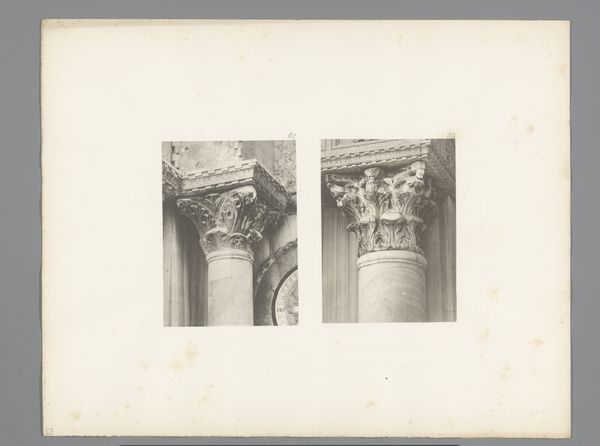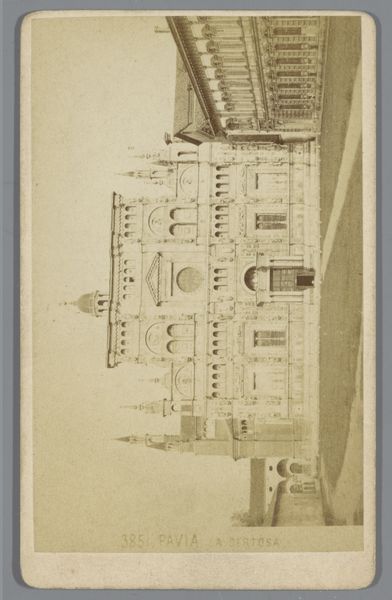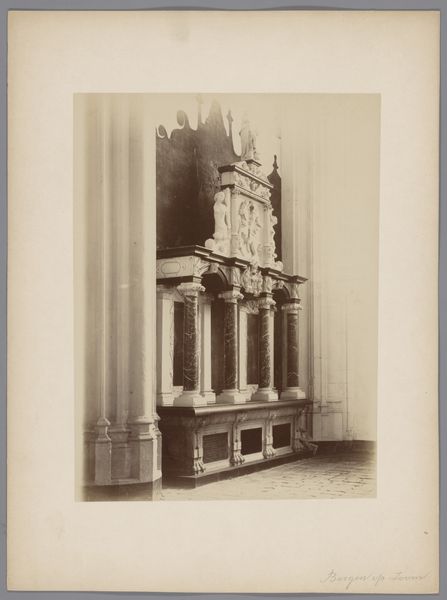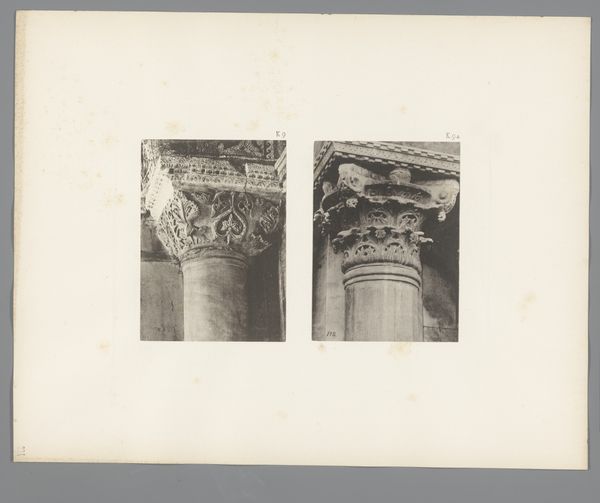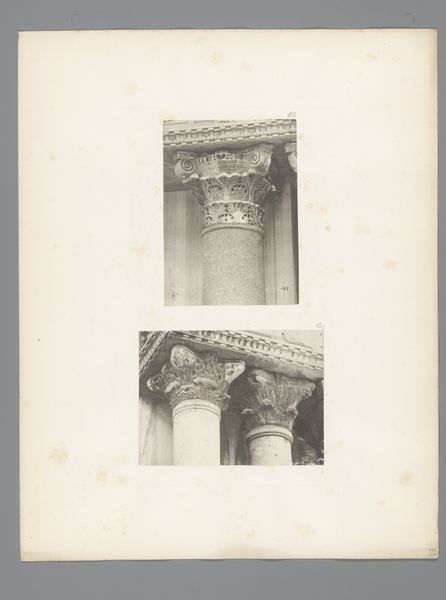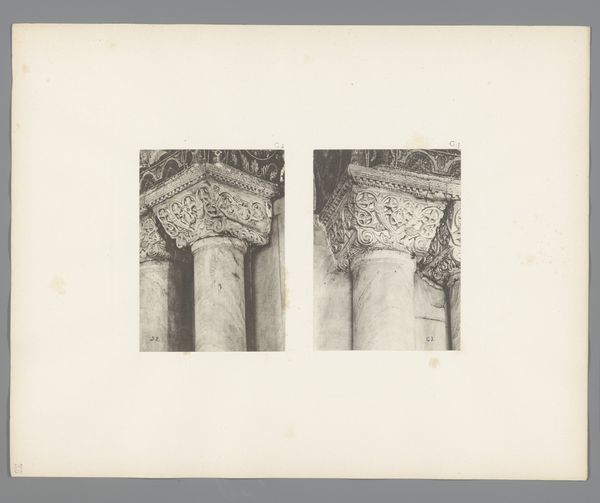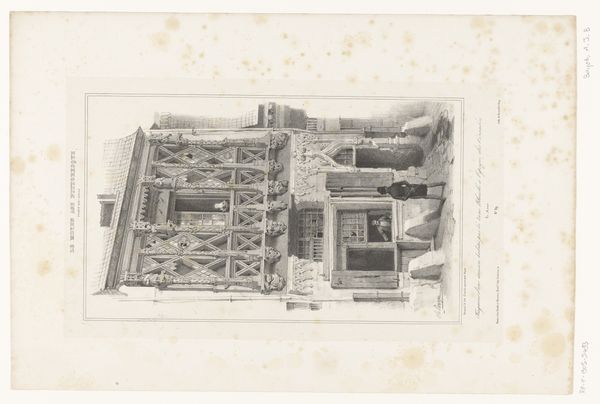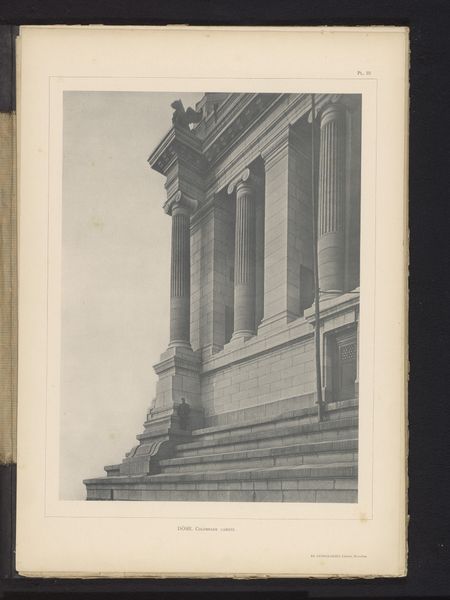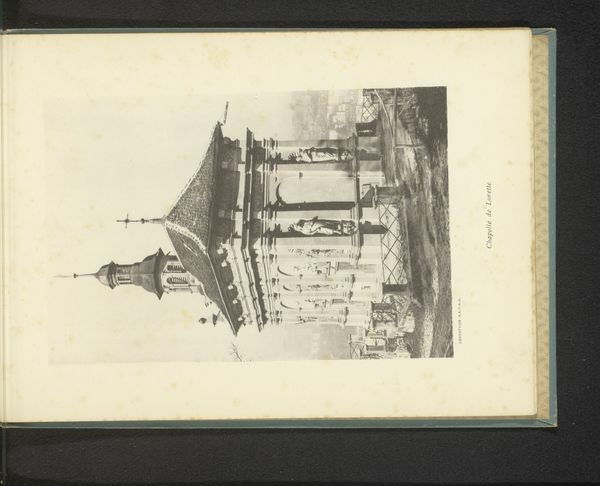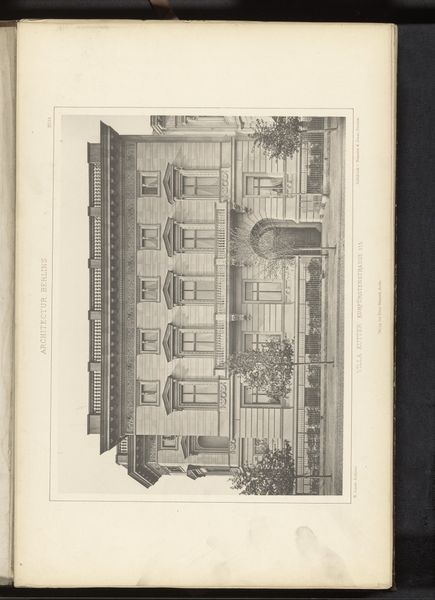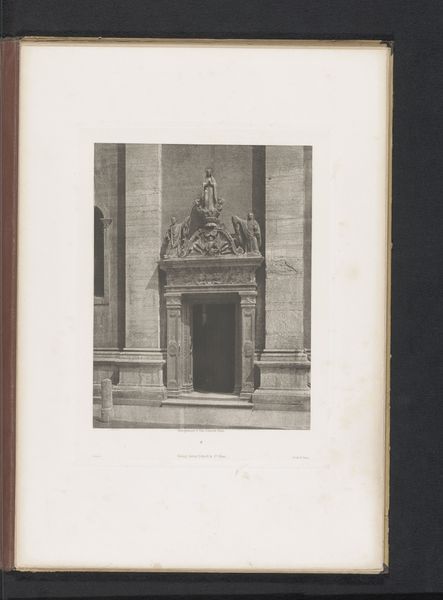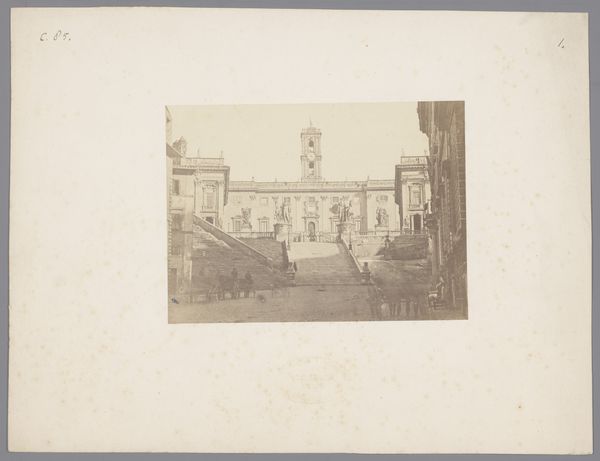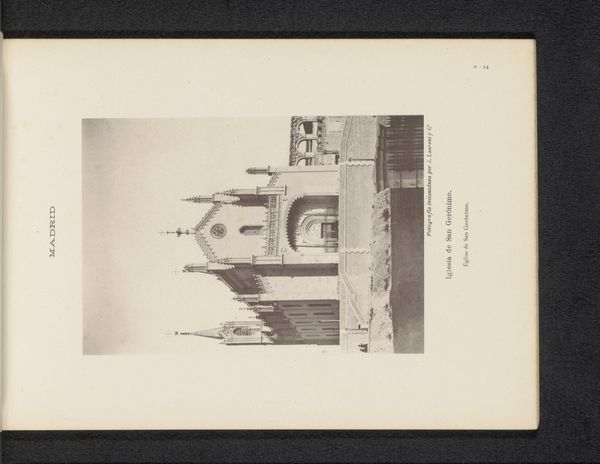
Dimensions: height 457 mm, width 348 mm
Copyright: Rijks Museum: Open Domain
Editor: Here we have an intriguing photographic print from the late 19th century, titled "View of the Arco della Pace from the Porta Sempione in Milan, Italy." It’s credited to an anonymous photographer. The neoclassical structure seems grand, but almost dreamlike in this faded sepia tone. What strikes you about this image? Curator: It's interesting to consider the labor involved in creating this photograph. The sourcing and processing of materials – the glass plate negative, the chemicals used for development, the paper – all required specific knowledge and skill. Beyond the supposed neutrality of photography, consider the photographer's choices: the angle, the time of day, the composition. Editor: That’s interesting. It also has a “snapshot” aesthetic feel of capturing urban life during that period of time. What statement was the photographer trying to make here? Curator: Was it really "urban life" or a carefully staged representation meant to project power? The Arco della Pace was commissioned by Napoleon; consider its function not simply as architecture, but as propaganda made possible through industrial advances in photography. Who was the intended audience, and what narratives about Italian power did this photograph circulate? It seems so modern, but we have to remind ourselves to look at the materiality that was part of production. Editor: That completely reframes how I see it! It’s less of a romantic scene and more about the industrial underpinnings that made this type of image—and the narratives it portrays—possible. I now consider my labor in seeing. Curator: Precisely. Recognizing those production chains shifts the focus from aesthetics alone to the social and economic forces shaping the very act of image-making. It changes the reception of the photograph and raises the question "Who benefitted in the image being made, as well as, how were those gains consolidated through the images distributed?" Editor: Thanks! I'm beginning to realize how the "simple act" of looking at an image becomes an analysis of labor practices and modes of consumption. Curator: Exactly. Now when you look at art, remember the materiality is also evidence.
Comments
No comments
Be the first to comment and join the conversation on the ultimate creative platform.
